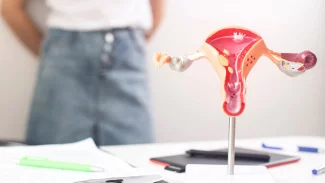Názor k článku SÚKL: vakcíny jsou bezpečné a vztah mezi očkováním a autismem neexistuje od tsd - Pane kolego jak je to s tím autismem...
-
Článek je starý, nové názory již nelze přidávat.
-
tsd (neregistrovaný)
Pane kolego jak je to s tím autismem a hliníkem a s vakcínami si můžete zatím ve volných chvílích prostudovat.
Posílám vám několik málo zajímavých odkazů, třeba si najdete chvilku času k sebevzdělávání.
Až s tím budete hotov, dejte vědět, pak se můžeme bavit dál.
(my se vlastně nebavíme)
:-)))H. Shiraki and Y. Yase, “Amyotrophic lateral sclerosis and Parkinsonism-dementia in the Kii peninsula: comparison with the same disorders in Guam and with Alzheimer's disease,” Handbook of Clinical Neurology, vol. 15, pp. 273–300, 1991. View at Google Scholar
M. S. Petrik, M. C. Wong, R. C. Tabata, R. F. Garry, and C. A. Shaw, “Aluminum adjuvant linked to Gulf War illness induces motor neuron death in mice,” NeuroMolecular Medicine, vol. 9, no. 1, pp. 83–100, 2007. View at Publisher · View at Google Scholar · View at Scopus
A. Campbell, “The potential role of aluminium in Alzheimer's disease,” Nephrology Dialysis Transplantation, vol. 17, no. 2, pp. 17–20, 2002. View at Google Scholar · View at Scopus
D. R. McLachlan, “Aluminium and the risk for Alzheimer's disease,” Environmetrics, vol. 6, no. 3, pp. 233–275, 1995. View at Google Scholar · View at Scopus
P. Zatta, Ed., “Recent topics in aluminium chemistry,” Coordination Chemistry Reviews, vol. 228, no. 2, 2002. View at Google Scholar
M. Kawahara, “Effects of aluminum on the nervous system and its possible link with neurodegenerative diseases,” Journal of Alzheimer's Disease, vol. 8, no. 2, pp. 171–182, 2005. View at Google Scholar · View at Scopus
P. Zatta, R. Lucchini, S. J. van Rensburg, and A. Taylor, “The role of metals in neurodegenerative processes: aluminum, manganese, and zinc,” Brain Research Bulletin, vol. 62, no. 1, pp. 15–28, 2003. View at Publisher · View at Google Scholar · View at Scopus
D. J. Selkoe, “The molecular pathology of Alzheimer's disease,” Neuron, vol. 6, no. 4, pp. 487–498, 1991. View at Publisher · View at Google Scholar · View at Scopus
I. Klatzo, H. Wisniewski, and E. Streicher, “Experimental production of neurofibrillary degeneration I. Light microscopic observation,” Journal of Neuropathology & Experimental Neurology, vol. 24, pp. 187–199, 1965. View at Google Scholar
D. R. Crapper, S. S. Krishnan, and A. J. Dalton, “Brain aluminum distribution in Alzheimer's disease and experimental neurofibrillary degeneration,” Science, vol. 180, no. 4085, pp. 511–513, 1973. View at Google Scholar · View at Scopus
C. N. Martyn, C. Osmond, J. A. Edwardson, D. J. P. Barker, E. C. Harris, and R. F. Lacey, “Geographical relation between Alzheimer's disease and aluminium in drinking water,” The Lancet, vol. 1, no. 8629, pp. 59–62, 1989. View at Google Scholar · View at Scopus
J. Hardy and D. J. Selkoe, “The amyloid hypothesis of Alzheimer's disease: progress and problems on the road to therapeutics,” Science, vol. 297, no. 5580, pp. 353–356, 2002. View at Publisher · View at Google Scholar · View at Scopus
O. Wirths, G. Multhaup, and T. A. Bayer, “A modified β-amyloid hypothesis: intraneuronal accumulation of the β-amyloid peptide—the first step of a fatal cascade,” Journal of Neurochemistry, vol. 91, no. 3, pp. 513–520, 2004. View at Publisher · View at Google Scholar · View at Scopus
S. L. Sensi, P. Paoletti, A. I. Bush, and I. Sekler, “Zinc in the physiology and pathology of the CNS,” Nature Reviews Neuroscience, vol. 10, no. 11, pp. 780–791, 2009. View at Publisher · View at Google Scholar · View at Scopus
P. Zatta, D. Drago, S. Bolognin, and S. L. Sensi, “Alzheimer's disease, metal ions and metal homeostatic therapy,” Trends in Pharmacological Sciences, vol. 30, no. 7, pp. 346–355, 2009. View at Publisher · View at Google Scholar · View at Scopus
Y. H. Hung, A. I. Bush, and R. A. Cherny, “Copper in the brain and Alzheimer's disease,” Journal of Biological Inorganic Chemistry, vol. 15, no. 1, pp. 61–76, 2010. View at Publisher · View at Google Scholar · View at Scopus
J. Spofforth, l. R. C. Edin, and M. R. C. Eng, “Case of aluminium poisoning,” The Lancet, vol. 197, no. 5103, p. 1301, 1921. View at Google Scholar · View at Scopus
J. G. Chusid, B. L. Pacella, L. M. Kopeloff, and N. Kopeloff, “Chronic epilepsy in the monkey following multiple intracerebral injection of alumina cream,” Proceedings of the Society for Experimental Biology and Medicine, vol. 78, pp. 53–54, 1951. View at Google Scholar
M. R. Wills and J. Savory, “Aluminum and chronic renal failure: sources, absorption, transport, and toxicity,” Critical Reviews in Clinical Laboratory Sciences, vol. 27, no. 1, pp. 59–107, 1989. View at Google Scholar · View at Scopus
A. C. Alfrey, G. R. LeGendre, and D. Kaehny, “The dialysis encephalopathy syndrome. Possible aluminium intoxication,” The New England Journal of Medicine, vol. 294, no. 4, pp. 184–188, 1976. View at Google Scholar · View at Scopus
P. Altmann, J. Cunningham, U. Dhanesha, M. Ballard, J. Thompson, and F. Marsh, “Disturbance of cerebral function in people exposed to drinking water contaminated with aluminium sulphate: retrospective study of the Camelford water incident,” British Medical Journal, vol. 319, no. 7213, pp. 807–811, 1999. View at Google Scholar · View at Scopus
T. P. Flaten, “Aluminium as a risk factor in Alzheimer's disease, with emphasis on drinking water,” Brain Research Bulletin, vol. 55, no. 2, pp. 187–196, 2001. View at Publisher · View at Google Scholar · View at Scopus
M. F. Frecker, “Dementia in Newfoundland: identification of a geographical isolate?” Journal of Epidemiology and Community Health, vol. 45, no. 4, pp. 307–311, 1991. View at Google Scholar · View at Scopus
L. C. Neri and D. Hewitt, “Aluminium, Alzheimer's disease, and drinking water,” The Lancet, vol. 338, no. 8763, p. 390, 1991. View at Google Scholar · View at Scopus
W. F. Forbes and D. R. C. McLachlan, “Further thoughts on the aluminum—Alzheimer's disease link,” Journal of Epidemiology and Community Health, vol. 50, no. 4, pp. 401–403, 1996. View at Google Scholar · View at Scopus
H. Jacqmin, D. Commenges, L. Letenneur, P. Barberger-Gateau, and J. F. Dartigues, “Components of drinking water and risk of cognitive impairment in the elderly,” American Journal of Epidemiology, vol. 139, no. 1, pp. 48–57, 1994. View at Google Scholar · View at Scopus
V. Rondeau, D. Commenges, H. Jacqmin-Gadda, and J. F. Dartigues, “Relation between aluminum concentrations in drinking water and Alzheimer's disease: an 8-year follow-up study,” American Journal of Epidemiology, vol. 152, no. 1, pp. 59–66, 2000. View at Publisher · View at Google Scholar · View at Scopus
V. Rondeau, H. Jacqmin-Gadda, D. Commenges, C. Helmer, and J. F. Dartigues, “Aluminum and silica in drinking water and the risk of Alzheimer's disease or cognitive decline: findings from 15-year follow-up of the PAQUID cohort,” American Journal of Epidemiology, vol. 169, no. 4, pp. 489–496, 2009. View at Publisher · View at Google Scholar · View at Scopus
W. J. Lukiw, T. P. A. Kruck, and D. R. Crapper McLachlan, “Alterations in human linker histone-DNA binding in the presence of aluminum salts in vitro and in Alzheimer's disease,” NeuroToxicology, vol. 8, no. 2, pp. 291–301, 1987. View at Google Scholar · View at Scopus
K. S. Bharathi, R. Jagannatha, and R. Stein, “First evidence on induced topological changes in supercoiled DNA by an aluminium D-aspartate complex,” Journal of Biological Inorganic Chemistry, vol. 8, no. 8, pp. 823–830, 2003. View at Publisher · View at Google Scholar · View at Scopus
K. S. Latha, S. Anitha, K. S. J. Rao, and M. A. Viswamitra, “Molecular understanding of aluminum-induced topological changes in (CCG)12 triplet repeats: relevance to neurological disorders,” Biochimica et Biophysica Acta, vol. 1588, no. 1, pp. 56–64, 2002. View at Publisher · View at Google Scholar · View at Scopus
N. A. Muma and S. M. Singer, “Aluminum-induced neuropathology: transient changes in microtubule-associated proteins,” Neurotoxicology and Teratology, vol. 18, no. 6, pp. 679–690, 1996. View at Publisher · View at Google Scholar · View at Scopus
I. M. Parhad, C. A. Krekoski, A. Mathew, and P. M. Tran, “Neuronal gene expression in aluminum myelopathy,” Cellular and Molecular Neurobiology, vol. 9, no. 1, pp. 123–138, 1989. View at Google Scholar · View at Scopus
S. Oshiro, M. Kawahara, S. Mika et al., “Aluminum taken up by transferrin-independent iron uptake affects the iron metabolism in rat cortical cells,” Journal of Biochemistry, vol. 123, no. 1, pp. 42–46, 1998. View at Google Scholar · View at Scopus
W. J. Lukiw, H. J. LeBlanc, L. A. Carver, D. R. C. McLachlan, and N. G. Bazan, “Run-on gene transcription in human neocortical nuclei: inhibition by nanomolar aluminum and implications for neurodegenerative disease,” Journal of Molecular Neuroscience, vol. 11, no. 1, pp. 67–78, 1998. View at Google Scholar · View at Scopus
F. Bosetti, G. Solaini, E. A. Tendi, E. G. Chikhale, K. Chandrasekaran, and S. I. Rapoport, “Mitochondrial cytochrome c oxidase subunit III is selectively down-regulated by aluminum exposure in PC12S cells,” NeuroReport, vol. 12, no. 4, pp. 721–724, 2001. View at Google Scholar · View at Scopus
K. A. Cox and M. A. Dunn, “Aluminum toxicity alters the regulation of calbindin-D28k protein and mRNA expression in chick intestine,” Journal of Nutrition, vol. 131, no. 7, pp. 2007–2013, 2001. View at Google Scholar · View at Scopus
V. J. Johnson and R. P. Sharma, “Aluminum disrupts the pro-inflammatory cytokine/neurotrophin balance in primary brain rotation-mediated aggregate cultures: possible role in neurodegeneration,” NeuroToxicology, vol. 24, no. 2, pp. 261–268, 2003. View at Publisher · View at Google Scholar · View at Scopus
W. J. Lukiw, M. E. Percy, and T. P. Kruck, “Nanomolar aluminum induces pro-inflammatory and pro-apoptotic gene expression in human brain cells in primary culture,” Journal of Inorganic Biochemistry, vol. 99, no. 9, pp. 1895–1898, 2005. View at Publisher · View at Google Scholar · View at Scopus
R. Lin, X. Chen, W. Li, Y. Han, P. Liu, and R. Pi, “Exposure to metal ions regulates mRNA levels of APP and BACE1 in PC12 cells: blockage by curcumin,” Neuroscience Letters, vol. 440, no. 3, pp. 344–347, 2008. View at Publisher · View at Google Scholar · View at Scopus
J. R. Walton and M. X. Wang, “APP expression, distribution and accumulation are altered by aluminum in a rodent model for Alzheimer's disease,” Journal of Inorganic Biochemistry, vol. 103, no. 11, pp. 1548–1554, 2009. View at Publisher · View at Google Scholar · View at Scopus
T. García, J. L. Esparza, M. Giralt, M. Romeu, J. L. Domingo, and M. Gómez, “Protective role of melatonin on oxidative stress status and RNA expression in cerebral cortex and cerebellum of aβpp transgenic mice after chronic exposure to aluminum,” Biological Trace Element Research, vol. 135, no. 1–3, pp. 220–232, 2010. View at Publisher · View at Google Scholar · View at Scopus
Y. Luo, F. Niu, Z. Sun et al., “Altered expression of Aβ metabolism-associated molecules from d-galactose/AlCl3 induced mouse brain,” Mechanisms of Ageing and Development, vol. 130, no. 4, pp. 248–252, 2009. View at Publisher · View at Google Scholar · View at Scopus
A. Castorina, A. Tiralongo, S. Giunta, M. L. Carnazza, G. Scapagnini, and V. D'Agata, “Early effects of aluminum chloride on beta-secretase mRNA expression in a neuronal model of β-amyloid toxicity,” Cell Biology and Toxicology, vol. 26, no. 4, pp. 367–377, 2010. View at Publisher · View at Google Scholar
J. M. Socorro, R. Olmo, C. Teijon, M. D. Blanco, and J. M. Teijon, “Analysis of aluminum-yeast hexokinase interaction: modifications on protein structure and functionality,” Journal of Protein Chemistry, vol. 19, no. 3, pp. 199–208, 2000. View at Publisher · View at Google Scholar · View at Scopus
J. C. K. Lai and J. P. Blass, “Inhibition of brain glycolysis by aluminum,” Journal of Neurochemistry, vol. 42, no. 2, pp. 438–446, 1984. View at Google Scholar · View at Scopus
S. W. Cho and J. G. Joshi, “Inactivation of bakers' yeast glucose-6-phosphate dehydrogenase by aluminum,” Biochemistry, vol. 28, no. 8, pp. 3613–3618, 1989. View at Google Scholar · View at Scopus
V. Kumar, A. Bal, and K. D. Gill, “Impairment of mitochondrial energy metabolism in different regions of rat brain following chronic exposure to aluminium,” Brain Research, vol. 1232, pp. 94–103, 2008. View at Publisher · View at Google Scholar · View at Scopus
J. Lemire, R. Mailloux, S. Puiseux-Dao, and V. D. Appanna, “Aluminum-induced defective mitochondrial metabolism perturbs cytoskeletal dynamics in human astrocytoma cells,” Journal of Neuroscience Research, vol. 87, no. 6, pp. 1474–1483, 2009. View at Publisher · View at Google Scholar · View at Scopus
R. J. Mailloux, R. Hamel, and V. D. Appanna, “Aluminum toxicity elicits a dysfunctional TCA cycle and succinate accumulation in hepatocytes,” Journal of Biochemical and Molecular Toxicology, vol. 20, no. 4, pp. 198–208, 2006. View at Publisher · View at Google Scholar · View at Scopus
K. Shetty, T. Veeranna, and S. C. Guru, “Phosphatase activity against neurofilament proteins from bovine spinal cord: effect of aluminium and neuropsychoactive drugs,” Neuroscience Letters, vol. 137, no. 1, pp. 83–86, 1992. View at Publisher · View at Google Scholar · View at Scopus
G. V. W. Johnson, K. W. Cogdill, and R. S. Jope, “Oral alumimum alters in vitro protein phosphorylation and kinase activities in rat brain,” Neurobiology of Aging, vol. 11, no. 3, pp. 209–216, 1990. View at Publisher · View at Google Scholar · View at Scopus
D. Julka and K. D. Gill, “Involvement of altered cytoskeletal protein phosphorylation in aluminum-induced CNS dysfunction,” Journal of Biochemical Toxicology, vol. 11, no. 5, pp. 227–233, 1996. View at Google Scholar · View at Scopus
A. Kaur, K. Joshi, R. W. Minz, and K. D. Gill, “Neurofilament phosphorylation and disruption: a possible mechanism of chronic aluminium toxicity in Wistar rats,” Toxicology, vol. 219, no. 1–3, pp. 1–10, 2006. View at Publisher · View at Google Scholar · View at Scopus
J. C. Troncoso, J. L. March, M. Haner, and U. Aebi, “Effect of aluminum and other multivalent cations on neurofilaments in vitro: an electron microscopic study,” Journal of Structural Biology, vol. 103, no. 1, pp. 2–12, 1990. View at Google Scholar · View at Scopus
H. Yamamoto, Y. Saitoh, S. Yasugawa, and E. Miyamoto, “Dephosphorylation of τ factor by protein phosphatase 2A in synaptosomal cytosol fractions, and inhibition by aluminum,” Journal of Neurochemistry, vol. 55, no. 2, pp. 683–690, 1990. View at Google Scholar · View at Scopus
A. H. El-Sebae, M. E. Abdel-Ghany, D. Shalloway, M. M. A. Zeid, J. Blancato, and M. A. Saleh, “Aluminum interaction with human brain tau protein phosphorylation by various kinases,” Journal of Environmental Science and Health Part B, vol. 28, no. 6, pp. 763–777, 1993. View at Google Scholar · View at Scopus
J. Diaz-Nido and J. Avila, “Aluminum induces the in vitro aggregation of bovine brain cytoskeletal proteins,” Neuroscience Letters, vol. 110, no. 1-2, pp. 221–226, 1990. View at Google Scholar · View at Scopus
S. K. Abd-Elghaffar, G. H. El-Sokkary, and A. A. Sharkawy, “Aluminum-induced neurotoxicity and oxidative damage in rabbits: protective effect of melatonin,” Neuroendocrinology Letters, vol. 26, no. 5, pp. 609–616, 2005. View at Google Scholar · View at Scopus
S. P. Guy, D. Jones, D. M. A. Mann, and R. F. Itzhaki, “Human neuroblastoma cells treated with aluminium express an epitope associated with Alzheimer's disease neurofibrillary tangles,” Neuroscience Letters, vol. 121, no. 1-2, pp. 166–168, 1991. View at Publisher · View at Google Scholar · View at Scopus
M. Kawahara, K. Muramoto, K. Kobayashi, and Y. Kuroda, “Functional and morphological changes in cultured neurons of rat cerebral cortex induced by long-term application of aluminum,” Biochemical and Biophysical Research Communications, vol. 189, no. 3, pp. 1317–1322, 1992. View at Publisher · View at Google Scholar · View at Scopus
J. Savory, Y. Huang, M. M. Herman, M. R. Reyes, and M. R. Wills, “Tau immunoreactivity associated with aluminum maltolate-induced neurofibrillary degeneration in rabbits,” Brain Research, vol. 669, no. 2, pp. 325–329, 1995. View at Publisher · View at Google Scholar · View at Scopus
T. Kihira, S. Yoshida, Y. Yase, S. Ono, and T. Kondo, “Chronic low-Ca/Mg high-Al diet induces neuronal loss,” Neuropathology, vol. 22, no. 3, pp. 171–179, 2002. View at Publisher · View at Google Scholar · View at Scopus
M. Kawahara, M. Kato, and Y. Kuroda, “Effects of aluminum on the neurotoxicity of primary cultured neurons and on the aggregation of β-amyloid protein,” Brain Research Bulletin, vol. 55, no. 2, pp. 211–217, 2001. View at Publisher · View at Google Scholar · View at Scopus
A. Campbell, A. Kumar, F. G. La Rosa, K. N. Prasad, and S. C. Bondy, “Aluminum increases levels of β-amyloid and ubiquitin in neuroblastoma but not in glioma cells,” Proceedings of the Society for Experimental Biology and Medicine, vol. 223, no. 4, pp. 397–402, 2000. View at Google Scholar · View at Scopus
D. Praticò, K. Uryu, S. Sung, S. Tang, J. Q. Trojanowski, and V. M. Lee, “Aluminum modulates brain amyloidosis through oxidative stress in APP transgenic mice,” The FASEB Journal, vol. 16, no. 9, pp. 1138–1140, 2002. View at Google Scholar · View at Scopus
L. F. Rodella, F. Ricci, E. Borsani et al., “Aluminium exposure induces Alzheimer's disease-like histopathological alterations in mouse brain,” Histology and Histopathology, vol. 23, no. 4-6, pp. 433–439, 2008. View at Google Scholar · View at Scopus
S. D. Provan and R. A. Yokel, “Aluminum inhibits glutamate release from transverse rat hippocampal slices: role of G proteins, Ca channels and protein kinase C,” NeuroToxicology, vol. 13, no. 2, pp. 413–420, 1992. View at Google Scholar · View at Scopus
J. J. Canales, R. Corbalán, C. Montoliu et al., “Aluminium impairs the glutamate-nitric oxide-cGMP pathway in cultured neurons and in rat brain in vivo: molecular mechanisms and implications for neuropathology,” Journal of Inorganic Biochemistry, vol. 87, no. 1, pp. 63–69, 2001. View at Publisher · View at Google Scholar · View at Scopus
H. Meiri, E. Banin, M. Roll, and A. Rousseau, “Toxic effects of aluminium on nerve cells and synaptic transmission,” Progress in Neurobiology, vol. 40, no. 1, pp. 89–121, 1993. View at Publisher · View at Google Scholar · View at Scopus
S. J. Yang, J. W. Huh, J. E. Lee, S. Y. Choi, T. U. Kim, and S. W. Cho, “Inactivation of human glutamate dehydrogenase by aluminum,” Cellular and Molecular Life Sciences, vol. 60, no. 11, pp. 2538–2546, 2003. View at Publisher · View at Google Scholar · View at Scopus
C. M. Nday, B. D. Drever, T. Salifoglou, and B. Platt, “Aluminium interferes with hippocampal calcium signaling in a species-specific manner,” Journal of Inorganic Biochemistry, vol. 104, pp. 919–927, 2010. View at Publisher · View at Google Scholar · View at Scopus
J. R. Hofstetter, I. Vincent, O. Bugiani, B. Ghetti, and J. A. Richter, “Aluminum-induced decreases in choline acetyltransferase, tyrosine hydroxylase, and glutamate decarboxylase in selected regions of rabbit brain,” Neurochemical Pathology, vol. 6, no. 3, pp. 177–193, 1987. View at Publisher · View at Google Scholar · View at Scopus
P. Zatta, M. Ibn-Lkhayat-Idrissi, P. Zambenedetti, M. Kilyen, and T. Kiss, “In vivo and in vitro effects of aluminum on the activity of mouse brain acetylcholinesterase,” Brain Research Bulletin, vol. 59, no. 1, pp. 41–45, 2002. View at Publisher · View at Google Scholar · View at Scopus
H. Bielarczyk, M. Tomaszewicz, and A. Szutowicz, “Effect of aluminum on acetyl-CoA and acetylcholine metabolism in nerve terminals,” Journal of Neurochemistry, vol. 70, no. 3, pp. 1175–1181, 1998. View at Google Scholar · View at Scopus
K. S. J. Rao and G. V. Rao, “Effect of aluminium (Al) on brain mitochondrial monoamine oxidase-A (MAO-A) activity—an in vitro kinetic study,” Molecular and Cellular Biochemistry, vol. 137, no. 1, pp. 57–60, 1994. View at Publisher · View at Google Scholar · View at Scopus
P. Zatta, P. Zambenedetti, and M. Milanese, “Activation of monoamine oxidase type-B by aluminum in rat brain homogenate,” NeuroReport, vol. 10, no. 17, pp. 3645–3648, 1999. View at Google Scholar · View at Scopus
M. Milanese, M. I. Lkhayat, and P. Zatta, “Inhibitory effect of aluminum on dopamine β-hydroxylase from bovine adrenal gland,” Journal of Trace Elements in Medicine and Biology, vol. 15, no. 2-3, pp. 139–141, 2001. View at Google Scholar · View at Scopus
J. C. K. Lai, L. Lim, and A. N. Davison, “Effects of Cd2+, Mn2+, and AI2+ on rat brain synaptosomal uptake of noradrenaline and serotonin,” Journal of Inorganic Biochemistry, vol. 17, no. 3, pp. 215–225, 1982. View at Publisher · View at Google Scholar · View at Scopus
M. Kanazirska, P. P. Vassilev, S. Y. Birzon, and P. M. Vassilev, “Voltage-dependent effect of AI3+ on channel activities in hippocampal neurons,” Biochemical and Biophysical Research Communications, vol. 232, no. 1, pp. 84–87, 1997. View at Publisher · View at Google Scholar · View at Scopus
T. Csóti, J. Gyri, J. Salánki, and L. Erdélyi, “pH-dependent actions of aluminum on voltage-activated sodium currents in snail neurons,” NeuroToxicology, vol. 22, no. 1, pp. 109–116, 2001. View at Publisher · View at Google Scholar · View at Scopus
B. Platt and D. Busselberg, “Combined actions of Pb2+, Zn2+, and AI2+ on voltage-activated calcium channel currents,” Cellular and Molecular Neurobiology, vol. 14, no. 6, pp. 831–840, 1994. View at Publisher · View at Google Scholar · View at Scopus
S. Pentyala, J. Ruggeri, A. Veerraju et al., “Microsomal Ca2+ flux modulation as an indicator of heavy metal toxicity,” Indian Journal of Experimental Biology, vol. 48, no. 7, pp. 737–743, 2010. View at Google Scholar · View at Scopus
L. Li, “The biochemistry and physiology of metallic fluoride: action, mechanism, and implications,” Critical Reviews in Oral Biology and Medicine, vol. 14, no. 2, pp. 100–114, 2003. View at Google Scholar · View at Scopus
C. Theiss and K. Meller, “Aluminum impairs gap junctional intercellular communication between astroglial cells in vitro,” Cell and Tissue Research, vol. 310, no. 2, pp. 143–154, 2002. View at Publisher · View at Google Scholar · View at Scopus
A. Bizzi, R. C. Crane, L. Autilio Gambetti, and P. Gambetti, “Aluminum effect on slow axonal transport: a novel impairment of neurofilament transport,” Journal of Neuroscience, vol. 4, no. 3, pp. 722–731, 1984. View at Google Scholar · View at Scopus
N. Siegel, C. Suhayda, and A. Haug, “Aluminum changes the conformation of calmodulin,” Physiological Chemistry and Physics, vol. 14, no. 2, pp. 165–167, 1982. View at Google Scholar · View at Scopus
A. Campbell, A. Becaria, D. K. Lahiri, K. Sharman, and S. C. Bondy, “Chronic exposure to aluminum in drinking water increases inflammatory parameters selectively in the brain,” Journal of Neuroscience Research, vol. 75, no. 4, pp. 565–572, 2004. View at Publisher · View at Google Scholar · View at Scopus
P. I. Oteiza, “A mechanism for the stimulatory effect of aluminum on iron-induced lipid peroxidation,” Archives of Biochemistry and Biophysics, vol. 308, no. 2, pp. 374–379, 1994. View at Publisher · View at Google Scholar · View at Scopus
N. Kaneko, T. Sugioka, and H. Sakurai, “Aluminum compounds enhance lipid peroxidation in liposomes: insight into cellular damage caused by oxidative stress,” Journal of Inorganic Biochemistry, vol. 101, no. 6, pp. 967–975, 2007. View at Publisher · View at Google Scholar · View at Scopus
S. V. Verstraeten and P. I. Oteiza, “Al-mediated changes in membrane physical properties participate in the inhibition of polyphosphoinositide hydrolysis,” Archives of Biochemistry and Biophysics, vol. 408, no. 2, pp. 263–271, 2002. View at Publisher · View at Google Scholar · View at Scopus
J. D. Pandya, K. R. Dave, and S. S. Katyare, “Effect of long-term aluminum feeding on lipid/phospholipid profiles of rat brain myelin,” Lipids in Health and Disease, vol. 3, article no. 13, 2004. View at Publisher · View at Google Scholar · View at Scopus
V. S. Silva, J. M. Cordeiro, M. J. Matos, C. R. Oliveira, and P. P. Gonçalves, “Aluminum accumulation and membrane fluidity alteration in synaptosomes isolated from rat brain cortex following aluminum ingestion: effect of cholesterol,” Neuroscience Research, vol. 44, no. 2, pp. 181–193, 2002. View at Publisher · View at Google Scholar · View at Scopus
O. Ghribi, M. M. Herman, M. S. Forbes, D. A. DeWitt, and J. Savory, “GDNF protects against aluminum-induced apoptosis in rabbits by upregulating Bcl-2 and Bcl-X and inhibiting mitochondrial Bax translocation,” Neurobiology of Disease, vol. 8, no. 5, pp. 764–773, 2001. View at Publisher · View at Google Scholar · View at Scopus
M. Kawahara, M. Kato-Negishi, R. Hosoda, L. Imamura, M. Tsuda, and Y. Kuroda, “Brain-derived neurotrophic factor protects cultured rat hippocampal neurons from aluminum maltolate neurotoxicity,” Journal of Inorganic Biochemistry, vol. 97, no. 1, pp. 124–131, 2003. View at Publisher · View at Google Scholar · View at Scopus
G. W. Guo and Y. X. Liang, “Aluminum-induced apoptosis in cultured astrocytes and its effect on calcium homeostasis,” Brain Research, vol. 888, no. 2, pp. 221–226, 2001. View at Publisher · View at Google Scholar · View at Scopus
M. J. Strong and R. M. Garruto, “Neuron-specific thresholds of aluminum toxicity in vitro: a comparative analysis of dissociated fetal rabbit hippocampal and motor neuron-enriched cultures,” Laboratory Investigation, vol. 65, no. 2, pp. 243–249, 1991. View at Google Scholar · View at Scopus
C. A. Shaw and M. S. Petrik, “Aluminum hydroxide injections lead to motor deficits and motor neuron degeneration,” Journal of Inorganic Biochemistry, vol. 103, no. 11, pp. 1555–1562, 2009. View at Publisher · View at Google Scholar · View at Scopus
B. Platt, D. O. Carpenter, D. Busselberg, K. G. Reymann, and G. Riedel, “Aluminum impairs hippocampal long-term potentiation in rats in vitro and in vivo,” Experimental Neurology, vol. 134, no. 1, pp. 73–86, 1995. View at Publisher · View at Google Scholar · View at Scopus
M. Wang, J. T. Chen, D. Y. Ruan, and Y. Z. Xu, “The influence of developmental period of aluminum exposure on synaptic plasticity in the adult rat dentate gyrus in vivo,” Neuroscience, vol. 113, no. 2, pp. 411–419, 2002. View at Publisher · View at Google Scholar · View at Scopus
R. A. Yokel, D. D. Allen, and J. J. Meyer, “Studies of aluminum neurobehavioral toxicity in the intact mammal,” Cellular and Molecular Neurobiology, vol. 14, no. 6, pp. 791–808, 1994. View at Publisher · View at Google Scholar · View at Scopus
N. Kaneko, J. Takada, H. Yasui, and H. Sakurai, “Memory deficit in mice administered aluminum-maltolate complex,” BioMetals, vol. 19, no. 1, pp. 83–89, 2006. View at Publisher · View at Google Scholar · View at Scopus
J. R. Walton, “A longitudinal study of rats chronically exposed to aluminum at human dietary levels,” Neuroscience Letters, vol. 412, no. 1, pp. 29–33, 2007. View at Publisher · View at Google Scholar · View at Scopus
P. Sethi, A. Jyoti, R. Singh, E. Hussain, and D. Sharma, “Aluminium-induced electrophysiological, biochemical and cognitive modifications in the hippocampus of aging rats,” NeuroToxicology, vol. 29, no. 6, pp. 1069–1079, 2008. View at Publisher · View at Google Scholar · View at Scopus
D. Ribes, M. T. Colomina, P. Vicens, and J. L. Domingo, “Effects of oral aluminum exposure on behavior and neurogenesis in a transgenic mouse model of Alzheimer's disease,” Experimental Neurology, vol. 214, no. 2, pp. 293–300, 2008. View at Publisher · View at Google Scholar · View at Scopus
D. Ribes, M. T. Colomina, P. Vicens, and J. L. Domingo, “Impaired spatial learning and unaltered neurogenesis in a transgenic model of alzheimer's disease after oral aluminum exposure,” Current Alzheimer Research, vol. 7, no. 5, pp. 401–408, 2010. View at Publisher · View at Google Scholar
P. Zatta, P. Zambenedetti, E. Reusche et al., “A fatal case of aluminium encephalopathy in a patient with severe chronic renal failure not on dialysis,” Nephrology Dialysis Transplantation, vol. 19, no. 11, pp. 2929–2931, 2004. View at Publisher · View at Google Scholar · View at Scopus
H. M. Wisniewski and G. Y. Wen, “Aluminium and Alzheimer's disease,” Ciba Foundation Symposium, vol. 169, pp. 142–154, 1992. View at Google Scholar · View at Scopus
D. Shore and R. J. Wyatt, “Aluminum and Alzheimer's disease,” Journal of Nervous and Mental Disease, vol. 171, no. 9, pp. 553–558, 1983. View at Google Scholar · View at Scopus
R. Doll, “Review: Alzheimer's disease and environmental aluminium,” Age and Ageing, vol. 22, no. 2, pp. 138–153, 1993. View at Google Scholar · View at Scopus
C. R. Harrington, C. M. Wischik, F. K. McArthur, G. A. Taylor, J. A. Edwardson, and J. M. Candy, “Alzheimer's-disease-like changes in tau protein processing: association with aluminium accumulation in brains of renal dialysis patients,” The Lancet, vol. 343, no. 8904, pp. 993–997, 1994. View at Publisher · View at Google Scholar
C. W. Scott, A. Fieles, L. A. Sygowski, and C. B. Caputo, “Aggregation of tau protein by aluminum,” Brain Research, vol. 628, no. 1-2, pp. 77–84, 1993. View at Publisher · View at Google Scholar · View at Scopus
R. A. Crowther, “Straight and paired helical filaments in Alzheimer disease have a common structural unit,” Proceedings of the National Academy of Sciences of the United States of America, vol. 88, no. 6, pp. 2288–2292, 1991. View at Google Scholar · View at Scopus
E. Bjertness, J. M. Candy, A. Torvik et al., “Content of brain aluminum is not elevated in Alzheimer disease,” Alzheimer Disease and Associated Disorders, vol. 10, no. 3, pp. 171–174, 1996. View at Google Scholar · View at Scopus
J. P. Landsberg, B. McDonald, and F. Watt, “Absence of aluminium in neuritic plaque cores in Alzheimer's disease,” Nature, vol. 360, no. 6399, pp. 65–68, 1992. View at Publisher · View at Google Scholar · View at Scopus
C. Bouras, P. Giannakopoulos, P. F. Good, A. Hsu, P. R. Hof, and D. P. Perl, “A laser microprobe mass analysis of brain aluminum and iron in dementia pugilistica: comparison with Alzheimer's disease,” European Neurology, vol. 38, no. 1, pp. 53–58, 1997. View at Google Scholar · View at Scopus
J. M. Candy, F. K. McArthur, A. E. Oakley et al., “Aluminium accumulation in relation to senile plaque and neurofibrillary tangle formation in the brains of patients with renal failure,” Journal of the Neurological Sciences, vol. 107, no. 2, pp. 210–218, 1992. View at Publisher · View at Google Scholar · View at Scopus
S. Yumoto, S. Kakimi, A. Ohsaki, and A. Ishikawa, “Demonstration of aluminum in amyloid fibers in the cores of senile plaques in the brains of patients with Alzheimer's disease,” Journal of Inorganic Biochemistry, vol. 103, no. 11, pp. 1579–1584, 2009. View at Publisher · View at Google Scholar · View at Scopus
A. Wettstein, J. Aeppli, K. Gautschi, and M. Peters, “Failure to find a relationship between mnestic skills of octagenarians and aluminum in drinking water,” International Archives of Occupational and Environmental Health, vol. 63, no. 2, pp. 97–103, 1991. View at Google Scholar
C. N. Martyn, D. N. Coggon, H. Inskip, R. F. Lacey, and W. F. Young, “Aluminum concentrations in drinking water and risk of Alzheimer's disease,” Epidemiology, vol. 8, no. 3, pp. 281–286, 1997. View at Google Scholar · View at Scopus
D. R. C. McLachlan, C. Bergeron, J. E. Smith, D. Boomer, and S. L. Rifat, “Risk for neuropathologically confirmed Alzheimer's disease and residual aluminum in municipal drinking water employing weighted residential histories,” Neurology, vol. 46, no. 2, pp. 401–405, 1996. View at Google Scholar · View at Scopus
E. Gauthier, I. Fortier, F. Courchesne, P. Pepin, J. Mortimer, and D. Gauvreau, “Aluminum forms in drinking water and risk of Alzheimer's disease,” Environmental Research, vol. 84, no. 3, pp. 234–246, 2000. View at Publisher · View at Google Scholar · View at Scopus
J. D. Birchall and J. S. Chappell, “The chemistry of aluminum and silicon in relation to Alzheimer's disease,” Clinical Chemistry, vol. 34, no. 2, pp. 265–267, 1988. View at Google Scholar · View at Scopus
J. A. Edwardson, P. B. Moore, I. N. Ferrier et al., “Effect of silicon on gastrointestinal absorption of aluminium,” The Lancet, vol. 342, no. 8865, pp. 211–212, 1993. View at Publisher · View at Google Scholar · View at Scopus
S. Gillete-Guyonnet, S. Andrieu, F. Nourhashemi, V. de la Guéronnière, H. Grandjean, and B. Vellas, “Cognitive impairment and composition of drinking water in women: findings of the EPIDOS study,” American Journal of Clinical Nutrition, vol. 81, no. 4, pp. 897–902, 2005. View at Google Scholar
A. Goate, M. C. Chartier-Harlin, M. Mullan et al., “Segregation of a missense mutation in the amyloid precursor protein gene with familial Alzheimer's disease,” Nature, vol. 349, no. 6311, pp. 704–706, 1991. View at Publisher · View at Google Scholar · View at Scopus
B. A. Yankner, L. K. Duffy, and D. A. Kirschner, “Neurotrophic and neurotoxic effects of amyloid β protein: reversal by tachykinin neuropeptides,” Science, vol. 250, no. 4978, pp. 279–282, 1990. View at Google Scholar
C. J. Pike, D. Burdick, A. J. Walencewicz, C. G. Glabe, and C. W. Cotman, “Neurodegeneration induced by β-amyloid peptides in vitro: the role of peptide assembly state,” Journal of Neuroscience, vol. 13, no. 4, pp. 1676–1687, 1993. View at Google Scholar · View at Scopus
L. K. Simmons, P. C. May, K. J. Tomaselli et al., “Secondary structure of amyloid β peptide correlates with neurotoxic activity in vitro,” Molecular Pharmacology, vol. 45, no. 3, pp. 373–379, 1994. View at Google Scholar · View at Scopus
D. J. Selkoe, “Soluble oligomers of the amyloid β-protein impair synaptic plasticity and behavior,” Behavioural Brain Research, vol. 192, no. 1, pp. 106–113, 2008. View at Publisher · View at Google Scholar · View at Scopus
C. Exley, N. C. Price, S. M. Kelly, and J. D. Birchall, “An interaction of β-amyloid with aluminium in vitro,” FEBS Letters, vol. 324, no. 3, pp. 293–295, 1993. View at Publisher · View at Google Scholar · View at Scopus
P. W. Mantyh, J. R. Ghilardi, S. Rogers et al., “Aluminum, iron, and zinc ions promote aggregation of physiological concentrations of β-amyloid peptide,” Journal of Neurochemistry, vol. 61, no. 3, pp. 1171–1174, 1993. View at Google Scholar · View at Scopus
M. Kawahara, K. Muramoto, K. Bobayashi, H. Mori, and Y. Kuroda, “Aluminum promotes the aggregation of Alzheimer's amyloid β-protein in vitro,” Biochemical and Biophysical Research Communications, vol. 198, no. 2, pp. 531–535, 1994. View at Publisher · View at Google Scholar
Y. Kuroda and M. Kawahara, “Aggregation of amyloid beta-protein and its neurotoxicity: enhancement by aluminum and other metals,” Tohoku Journal of Experimental Medicine, vol. 174, no. 3, pp. 263–268, 1994. View at Google Scholar · View at Scopus
G. D. Fasman, A. Perczel, and C. D. Moore, “Solubilization of β-amyloid-(1-42)-peptide: reversing the β-sheet conformation induced by aluminum with silicates,” Proceedings of the National Academy of Sciences of the United States of America, vol. 92, no. 2, pp. 369–371, 1995. View at Publisher · View at Google Scholar
E. House, J. Collingwood, A. Khan, O. Korchazkina, G. Berthon, and C. Exley, “Aluminium, iron, zinc and copper Influence the in vitro formation of amyloid fibrils of Aβ42 in a manner which may have consequences for metal chelation therapy in Alzheimer's disease,” Journal of Alzheimer's Disease, vol. 6, no. 3, pp. 291–301, 2004. View at Google Scholar
S. C. Bondy and A. Truong, “Potentiation of beta-folding of β-amyloid peptide 25–35 by aluminum salts,” Neuroscience Letters, vol. 267, no. 1, pp. 25–28, 1999. View at Publisher · View at Google Scholar · View at Scopus
Y. H. Chong and Y. H. Suh, “Aggregation of amyloid precursor proteins by aluminum in vitro,” Brain Research, vol. 670, no. 1, pp. 137–141, 1995. View at Publisher · View at Google Scholar · View at Scopus
H. Murayama, R.-W. Shin, J. Higuchi, S. Shibuya, T. Muramoto, and T. Kitamoto, “Interaction of aluminum with PHFtau in Alzheimer's disease neurofibrillary degeneration evidenced by desferrioxamine-assisted chelating autoclave method,” American Journal of Pathology, vol. 155, no. 3, pp. 877–885, 1999. View at Google Scholar
S. R. Paik, J. H. Lee, D. H. Kim, C. S. Chang, and J. Kim, “Aluminum-induced structural alterations of the precursor of the non-Aβ component of Alzheimer's disease amyloid,” Archives of Biochemistry and Biophysics, vol. 344, no. 2, pp. 325–334, 1997. View at Publisher · View at Google Scholar · View at Scopus
V. N. Uversky, J. Li, and A. L. Fink, “Metal-triggered structural transformations, aggregation, and fibrillation of human α-synuclein: a possible molecular link between parkinson's disease and heavy metal exposure,” Journal of Biological Chemistry, vol. 276, no. 47, pp. 44284–44296, 2001. View at Publisher · View at Google Scholar
B. Ward, K. Walker, and C. Exley, “Copper(II) inhibits the formation of amylin amyloid in vitro,” Journal of Inorganic Biochemistry, vol. 102, no. 2, pp. 371–375, 2008. View at Publisher · View at Google Scholar · View at Scopus
A. Khan, A. E. Ashcroft, O. V. Korchazhkina, and C. Exley, “Metal-mediated formation of fibrillar ABri amyloid,” Journal of Inorganic Biochemistry, vol. 98, no. 12, pp. 2006–2010, 2004. View at Publisher · View at Google Scholar · View at Scopus
F. Ricchelli, P. Fusi, P. Tortora et al., “Destabilization of non-pathological variants of ataxin-3 by metal ions results in aggregation/fibrillogenesis,” International Journal of Biochemistry and Cell Biology, vol. 39, no. 5, pp. 966–977, 2007. View at Publisher · View at Google Scholar · View at Scopus
M. Chaussidon, P. Netter, M. Kessler et al., “Dialysis-associated arthropathy: secondary ion mass spectrometry evidence of aluminum silicate in β-microglobulin amyloid synovial tissue and articular cartilage,” Nephron, vol. 65, no. 4, pp. 559–563, 1993. View at Google Scholar · View at Scopus
R. Fukuyama, T. Mizuno, T. Mizuno et al., “Age-dependent change in the levels of Aβ40 and Aβ42 in cerebrospinal fluid from control subjects, and a decrease in the ratio of Aβ42 to Aβ40 level in cerebrospinal fluid from Alzheimer's disease patients,” European Neurology, vol. 43, no. 3, pp. 155–160, 2000. View at Google Scholar · View at Scopus
M. Kawahara, “Role of calcium dyshomeostasis via amyloid channels in the pathogenesis of Alzheimer's disease,” Current Pharmaceutical Design, vol. 16, pp. 2779–2789, 2010. View at Google Scholar
T. Dyrks, E. Dyrks, C. L. Masters, and K. Beyreuther, “Amyloidogenicity of rodent and human βA4 sequences,” FEBS Letters, vol. 324, no. 2, pp. 231–236, 1993. View at Publisher · View at Google Scholar · View at Scopus
A. I. Bush, W. H. Pettingell, G. Multhaup et al., “Rapid induction of Alzheimer Aβ amyloid formation by zinc,” Science, vol. 265, no. 5177, pp. 1464–1467, 1994. View at Google Scholar · View at Scopus
C. S. Atwood, R. D. Moir, X. Huang et al., “Dramatic aggregation of alzheimer Aβ by Cu(II) is induced by conditions representing physiological acidosis,” Journal of Biological Chemistry, vol. 273, no. 21, pp. 12817–12826, 1998. View at Publisher · View at Google Scholar · View at Scopus
M. A. Lovell, C. Xie, and W. R. Markesbery, “Protection against amyloid beta peptide toxicity by zinc,” Brain Research, vol. 823, no. 1-2, pp. 88–95, 1999. View at Publisher · View at Google Scholar · View at Scopus
M. Kawahara, N. Arispe, Y. Kuroda, and E. Rojas, “Alzheimer's disease amyloid β-protein forms Zn2+-sensitive, cation-selective channels across excised membrane patches from hypothalamic neurons,” Biophysical Journal, vol. 73, no. 1, pp. 67–75, 1997. View at Google Scholar · View at Scopus
T. Sakamoto, H. Saito, K. Ishii, H. Takahashi, S. Tanabe, and Y. Ogasawara, “Aluminum inhibits proteolytic degradation of amyloid β peptide by cathepsin D: a potential link between aluminum accumulation and neuritic plaque deposition,” FEBS Letters, vol. 580, no. 28-29, pp. 6543–6549, 2006. View at Publisher · View at Google Scholar
F. Ricchelli, D. Drago, B. Filippi, G. Tognon, and P. Zatta, “Aluminum-triggered structural modifications and aggregation of β-amyloids,” Cellular and Molecular Life Sciences, vol. 62, no. 15, pp. 1724–1733, 2005. View at Publisher · View at Google Scholar · View at Scopus
D. Drago, A. Cavaliere, N. Mascetra et al., “Aluminum modulates effects of βamyloid1-42 on neuronal calcium homeostasis and mitochondria functioning and is altered in a triple transgenic mouse model of Alzheimer's disease,” Rejuvenation Research, vol. 11, no. 5, pp. 861–871, 2008. View at Publisher · View at Google Scholar
D. Drago, S. Bolognin, and P. Zatta, “Role of metal ions in the Aβ oligomerization in Alzheimer's disease and in other neurological disorders,” Current Alzheimer Research, vol. 5, no. 6, pp. 500–507, 2008. View at Publisher · View at Google Scholar
C. Exley and M. M. Esiri, “Severe cerebral congophilic angiopathy coincident with increased brain aluminium in a resident of Camelford, Cornwall, UK,” Journal of Neurology, Neurosurgery and Psychiatry, vol. 77, no. 7, pp. 877–879, 2006. View at Publisher · View at Google Scholar · View at Scopus
D. L. Dickstein, J. Walsh, H. Brautigam, S. D. Stockton Jr., S. Gandy, and P. R. Hof, “Role of vascular risk factors and vascular dysfunction in Alzheimer's disease,” Mount Sinai Journal of Medicine, vol. 77, no. 1, pp. 82–102, 2010. View at Publisher · View at Google Scholar · View at Scopus
M. U. Muckenthaler, B. Galy, and M. W. Hentze, “Systemic iron homeostasis and the iron-responsive element/iron-regulatory protein (IRE/IRP) regulatory network,” Annual Review of Nutrition, vol. 28, pp. 197–213, 2008. View at Publisher · View at Google Scholar · View at Scopus
K. Yamanaka, N. Minato, and K. Iwai, “Stabilization of iron regulatory protein 2, IRP2, by aluminum,” FEBS Letters, vol. 462, no. 1-2, pp. 216–220, 1999. View at Publisher · View at Google Scholar · View at Scopus
R. R. Crichton, S. Wilmet, R. Legssyer, and R. J. Ward, “Molecular and cellular mechanisms of iron homeostasis and toxicity in mammalian cells,” Journal of Inorganic Biochemistry, vol. 91, no. 1, pp. 9–18, 2002. View at Publisher · View at Google Scholar · View at Scopus
S. Oshiro, M. Kawahara, Y. Kuroda et al., “Glial cells contribute more to iron and aluminum accumulation but are more resistant to oxidative stress than neuronal cells,” Biochimica et Biophysica Acta, vol. 1502, no. 3, pp. 405–414, 2000. View at Publisher · View at Google Scholar · View at Scopus
H.-H. Cho, C. M. Cahill, C. R. Vanderburg et al., “Selective translational control of the Alzheimer amyloid precursor protein transcript by iron regulatory protein-1,” Journal of Biological Chemistry, vol. 285, no. 41, pp. 31217–31232, 2010. View at Publisher · View at Google Scholar
J. A. Duce, A. Tsatsanis, M. A. Cater et al., “Iron-export ferroxidase activity of β-amyloid precursor protein is inhibited by zinc in Alzheimer's disease,” Cell, vol. 142, no. 6, pp. 857–867, 2010. View at Publisher · View at Google Scholar
G. K. W. Kong, L. A. Miles, G. A. N. Crespi et al., “Copper binding to the Alzheimer's disease amyloid precursor protein,” European Biophysics Journal, vol. 37, no. 3, pp. 269–279, 2008. View at Publisher · View at Google Scholar · View at Scopus
K. Namekata, M. Imagawa, A. Terashi, S. Ohta, F. Oyama, and Y. Ihara, “Association of transferrin C2 allele with late-onset Alzheimer's disease,” Human Genetics, vol. 101, no. 2, pp. 126–129, 1997. View at Publisher · View at Google Scholar · View at Scopus
D. J. Lehmann, M. Schuur, D. R. Warden et al., “Transferrin and HFE genes interact in Alzheimer's disease risk: the Epistasis Project,” Neurobiology of Aging. In press. View at Publisher · View at Google Scholar
M. Imagawa, S. Naruse, S. Tsuji, A. Fujioka, and H. Yamaguchi, “Coenzyme Q10, iron, and vitamin B6 in genetically-confirmed Alzheimer's disease,” The Lancet, vol. 340, no. 8820, p. 671, 1992. View at Google Scholar · View at Scopus
M. L. Hegde, P. Bharathi, A. Suram et al., “Challenges associated with metal chelation therapy in alzheimer's disease,” Journal of Alzheimer's Disease, vol. 17, no. 3, pp. 457–468, 2009. View at Publisher · View at Google Scholar
A. I. Bush and R. E. Tanzi, “Therapeutics for Alzheimer's disease based on the metal hypothesis,” Neurotherapeutics, vol. 5, no. 3, pp. 421–432, 2008. View at Publisher · View at Google Scholar · View at Scopus
R. A. Yokel, “Aluminum chelation: chemistry, clinical, and experimental studies and the search for alternatives to desferrioxamine,” Journal of Toxicology and Environmental Health, vol. 41, no. 2, pp. 131–174, 1994. View at Google Scholar · View at Scopus
C. Exley, “Organosilicon therapy in Alzheimer's disease?” Journal of Alzheimer's Disease, vol. 11, no. 3, pp. 301–302, 2007. View at Google Scholar · View at Scopus
M. Kawahara, K. Konoha, T. Nagata, and Y. Sadakane, “Aluminum and human health: its intake, bioavailability and neurotoxicity,” Biomedical Research on Trace Elements, vol. 18, pp. 111–120, 2007. View at Google Scholar
S. Yumoto, H. Nagai, K. Kobayashi, A. Tamate, S. Kakimi, and H. Matsuzaki, “Al incorporation into the brain of suckling rats through maternal milk,” Journal of Inorganic Biochemistry, vol. 97, no. 1, pp. 155–160, 2003. View at Publisher · View at Google Scholar · View at Scopus
N. D. Priest, “The biological behaviour and bioavailability of aluminium in man, with special reference to studies employing aluminium-26 as a tracer: review and study update,” Journal of Environmental Monitoring, vol. 6, no. 5, pp. 375–403, 2004. View at Publisher · View at Google Scholar · View at Scopus
M. Kawahara, “Auminum and human health: possible link with neurodegenerative disorders,” in Metals and Neurodegeneration, S. Huang, Ed., pp. 15–56, Research Signpost, 2010. View at Google Scholar
Dále u nás najdete
Najdete na Vitalia.cz
- BMI kalkulačka
- Příznaky cukrovky
- Bolest zad
- Rýmovník
- BMI kalkulačka pro ženy
- Příznaky sklerózy
- Bolest břicha
- Kotvičník
- BMI kalkulačka pro muže
- Příznaky zápalu plic
- Bolest v krku
- Heřmánek
- Těhotenská kalkulačka
- Příznaky chřipky
- Bolest v podbřišku
- Rozmarýn
- Ovulační kalkulačka
- Příznaky angíny
- Bolest hlavy
- Jitrocel




















